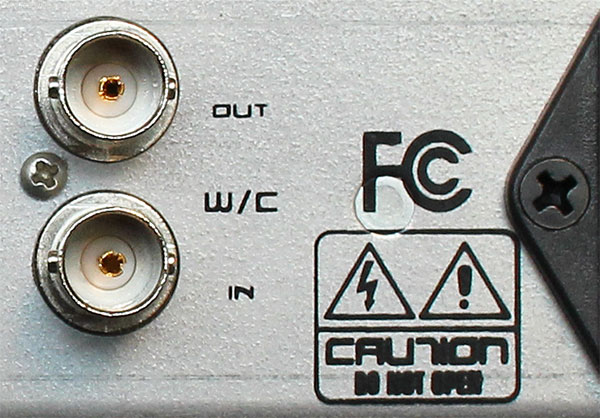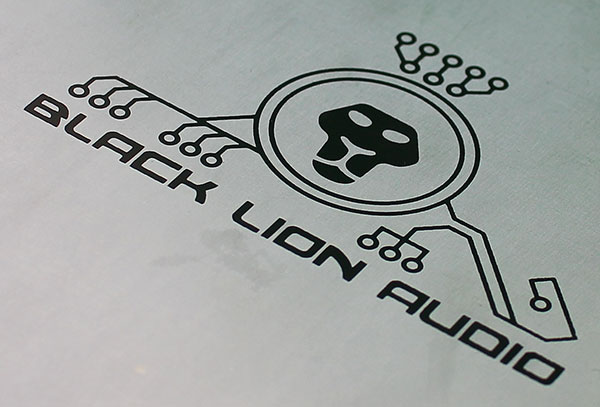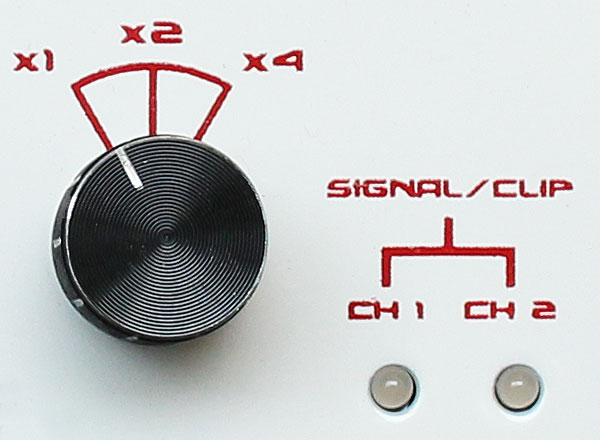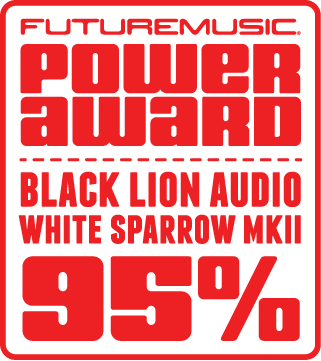By Dan Brotman, Editor-In-Chief
Special To FutureMusic
If we’ve decided that clocks have different sonic signatures, would you ever chose one over another based on the genre of music you were producing? That was the question running through my mind as I entered a long-running audio trade show. Negotiating my way through a sea of wares, any company with a Master Clock product stood out as a potential trove of insight. I visited several recognizable brands and spoke to a variety of audio industry technicians to discover quite quickly that there’s no one answer to that question.
Although seemingly straight forward, Clocking certainly has a “VooDoo” aura. With several paths to quality clocking, how do you decide which is best? Brand? Price?
As I moved through the booth displays, my eye settled on Black Lion Audio. Hey, they have a clocking product! In fact, I believe they have two, or maybe it’s a Mark II or something. And then whoosh. All audio sucked away and then came rushing back with only the sound of Nate Bierdeman’s voice, Black Lion’s Assistant General Manager — “Hi, do you have any questions?” — his hand reaching towards me. Most of the outside din of the convention melted away. Embracing his hand, I met his eye and smiled.
Why yes, I do…
![]()
Hotmodders
Now I’ve known about Chicago’s Black Lion Audio for some time. They emerged on the landscape as a somewhat renegade audio customizer that souped up MOTU audio interfaces by swapping out the pre’s and performing some other conversion mojo. Not only is this a viable business, in the disposable, out-dated in six months audio age we live in now, but it also showcased how much more quality can be wrung out of current off-the-shelf products. Still a big part of Black Lion Audio’s business to this day, the company is not only hotrodding MOTU, but Focusrite, Digidesign, and RME to name a few.
Black Lion’s booth was laid back and populated by several staffers, including the company’s affable GM, JD Herrin, and featured a number of new products. Some of which were solo tours by employees who are allowed to pursue a personal product idea, produce a prototype and then pitch it to the company. If green-lighted in a vote, the product goes to market. The Sparrow mkII is not one of those products.
The Sparrow mkII is Black Lion’s revamped 2-channel analog-to-digital (A/D) converter which subscribes precisely to their brand proposition of affordable, quality conversion. You’re not going to get a big song and dance routine on any BLA interface and the Sparrow is no different. A single switch, a couple of LEDs and four knobs round out the front panel, which looks like something that would be most at home in Clement “Coxsone” Dodd’s famed Studio One recording studio. Two of the knobs are volume selectors for the Channel 1 and 2 outputs with four choices, +11, +4, -3, -10. The third knob selects Word Clock IN, 44 kHz, 48 kHz and the three multiplier selections x1 (for word clock rates of 44.1kHz and 48kHz), x2 (88.2kHz and 96kHz), x4 (176.4kHz and 192kHz). The two LEDs (channel one and channel two) offer “metering.” Oh, and I can’t forget the power toggle. Why the mention of an on/off switch? It’s not necessarily a given with Black Lion Audio.
![]()

Front of the White Sparrow MkII gives you everything you need and nothing more
![]()
A/D Weapon Of Choice
The Sparrow A/D line up comes in two flavors, Red and White. The major difference is that the White utilizes two converters in a parallel-balanced circuit to increase dynamic range, while the Red depends on one. However, there are other significant differences as well in the architecture worth noting. The Red is based on the circuitry on the Black Lion Audio FM192, a collaboration with Requisite Audio Engineering that amplified a Pro Tools HD 192 to Black Lion “standards.” The White is $600 more, but adds the aforementioned second converter, as well as the latest research and development “wins” — including delta sigma conversion and their latest FM synth clock with wide Q third harmonic crystal oscillators. The clock, also featured in Black Lion’s MicroClock mkII provides low jitter and is designed to increase the amount of desirable harmonics within the clock’s spectral band. Specialized noise reduction developed by Black Lion is said to eliminate the unwanted switching harmonics normally found in digital signals. Both feature the same connectivity: XLR and 1/4″ balanced inputs, BNC word clock I/O, AES output, Coax output and an optical S/PDIF output.
![]()

Rear of the White Sparrow MkII provides plenty of connectivity
![]()
Features & Specifications:
» Balanced inputs (XLR or 1/4″)
» +11, +4, -3, -10 selectable user input level calibration
» Word clock input and output
» Sampling rates from 44.1kHz -192kHz
» AES, coax S/PDIF &optical S/PDIF digital outputs
» LED metering
» Accommodates nominal input signal levels from +11dBu down to -10dBV
» 1U high, 1/2 space rack mount chassis
» User selectable 110/220 voltage input
» Dynamic range:
— 120dB Red Sparrow Unweighted
— 122dB for the White Sparrow Unweighted
— (124dB A-Weighted)
» Max analog input before digital clipping: >+24dBu
» Inputs:
— Balanced Analog = TRS and XLR
— Clock = 75 Ohm BNC
» Outputs:
— SPDIF = Coaxial (75 Ohm) and Optical
— AES-EBU (110 Ohm)
— Word Clock = 75 Ohm BNC
— Word Clock Lock = indicator LED
» Sampling rates: 44.1kHz – 192kHz
» Bit rate: 24 bit
» Latency: Less Than or Equal To 65/Fs
» Digital Audio Output Level Meter: Bi-Color LED (Green/Amber/Red)
![]()
Nice House, Big BASSment
We spent considerable time with the White Sparrow MkII, allowing four different evaluators, plus myself, to entertain the MkII in a variety of setups. Their comments in quotes below.
Two of our reviewers employed the Sparrow as A/D conversion for their mid-level analog mixers, one focusing on rock, the other on industrial. Swapping out their RME and Apogee interfaces with the Sparrow, both cited the “delicious bottom” on the conversion that had “just the right amount of viscosity” to “provide fullness without tubbiness.” The other evaluator compared his experience to architecture. “I can equate it to living in this nice house that I thought was quite complete. However, when I switched to the Sparrow, I discovered a door with a wide staircase leading down. Suddenly, my house had this really huge BASSment. And not just one with cement walls…fully furnished with a pool table, big screen TV and a full bar.”
Our rock reviewer recorded an acoustic guitar with an X/Y stereo mic configuration at a commercial studio. With top-end matched mics and a pair of world class pre’s, he inserted the White Sparrow at the end of his signal chain to evaluate the 24 bit / 192kHz conversion against several stereo and multichannel A/D boxes available. He came away impressed with how the Black Lion performed. The “soundstage was certainly more pronounced along the axises…providing a natural depth, while still enabling the guitar’s sound to be firmly planted in the center.” He found the “smooth character” of the conversion to be “very musical” without any “artificial phase” that some other gear relies on “to increase the width.”
![]()

![]()
Our EDM reviewers found the Sparrow made a significant impact on their overall sound. “Frankly, I’m shocked on what a difference the Sparrow made over my current set up, which I thought was pretty dialed-in,” stated one reviewer. “I run a MIDI Pre-Rig that funnels my outboard gear into Logic and I often get compliments for my clean signal path. Not having much experience with Black Lion Audio products, I was expecting their take on A/D conversion to pale in comparison with my Benchmark ADC1. However, I was wrong. Not only did the Sparrow hold it’s own, but the expanded soundstage seemed to ‘wake up’ the top end of my [Dubstep] tracks while staying grounded to the hard, metal edges of my unforgiving basslines.” Although, this reviewer was not ready to give up his Benchmark for the Sparrow, since he liked the metering and the additional gain options. However, he did feel the BLA gave the ADC1 “a serious run for its money in the sound department.”
The notion of “openness” was often repeated by the evaluators, and this is something I discovered when testing the Sparrow on FutureMusic’s collection of vintage and modern analog synths. The best way to describe the difference was to think of the dynamic range in terms of a rectangle, which is how it is visually depicted by most plug-ins. Instead of a two-dimensional rectangle I found the range was better portrayed by an elongated sphere expanding outwards. Full, open, and very musical. The experience was certainly apparent on vintage synths, which seem to “come to life” and “provide another musical dimension” to the sound. Blind A/B tests supported the initial findings and surprised several staffers who found the results to be concurrent with units costing quite a bit more. Considering the Sparrow’s versatility and size, I feel the unit can also be a great solution for portable rigs.
Next up was a test on my own personal collection of vintage, analog drum synths. What I was looking for was the EDM-mandatory low-end thwack, which can be very pronounced when these units are properly coaxed. This is where I found the “BASSment” analogy to be quite applicable. The difference was not only obvious, but repeatable, which eliminated the notion of a “one-off” or fluke circumstance. The kicks had a thickness and weight with the White Sparrow, instead of a mere presence after the impact.
![]()

![]()
One aspect I found fascinating when conducting this extensive review was Black Lion Audio’s company culture. In fact, I believe it’s the culture of the company that has allowed the concern to grow organically and position itself for success in the future. Unlike other corporate behemoths that stifle creativity and individual contributions, BLA encourages its employees to express themselves. As mentioned above, any BLA employee can come up with their own products and present them to the company for consideration. Not only is this refreshing, exciting and healthy for employees, it can lead to real in-house innovation. Nate Bierdeman expressed to us that “Black Lion Audio has always been an employee-led company. This comes as a direct result of every employee being immersed in the audio industry and making critical observations about what they would like to see happen next. The most important part of our company culture is every employee is a musician and many of us own a recording studio to boot.”
Beyond Black Lion’s expertise in hotmodding [my word] and conversion, I asked Nate what exactly was the company looking to target sonically with the White Sparrow MkII? “The development of our own standalone ‘Sparrow’ converters was largely informed by modifying many other companies’ converters, as well as by conducting countless A/B comparisons of our modifications against highly sought-after (and sometimes unbelievably expensive) alternatives. We felt there was an aural deficit at just about every price point in the conversion market, and made it part of our mission to close the gap between quality and cost. That being the case, we designed the Sparrows to compete sonically with converters that cost 2-3 times as much, and are surprised at how much of an impact that has made on the industry.”
![]()

Yup, that's it...BLA's Digital Output Metering consists of two multi-colored LEDs
![]()
Although the reviews were indeed glowing, there was a couple of gripes regarding the interface. Compared to the Benchmark, Apogee and the Drawmer A2D2, there’s not much going on out front, especially at this price point. We asked Bierdeman for Black Lion’s reasoning in regard to the minimal look. “Our approach to product design is to deliver unrivaled sound quality at our target price point. When we were just starting out, we had very little buying power when it came to fancy knobs, meters, and faceplates. As our buying power increased over the years, we’ve been able to make aesthetic improvements with very little impact on the price. Our hope is to continue this trajectory to the point where our aesthetic capabilities match our sonic accomplishments.”
Considering what Black Lion Audio has been able to accomplish on the sonic front with the Sparrow, most users would find the “set and forget” controls to be adequate, but since we’ve been comparing it to several models in the same price point, it wouldn’t be fair to omit what one evaluator described as a “minor deficit” — the digital output metering. Not that you shouldn’t be able to hear it, or that you really need anything more than a clipping indicator, the LED green/yellow/red “disco show” is pretty limited.
The Black Lion Audio White Sparrow costs $1999 and the Red Sparrow will set you back $1399. Both are available now from Black Lion’s website or major retailers. It achieved the coveted FutureMusic Power Award and is Highly Recommended for anyone looking for the highest quality A/D conversion in its price range (and well above).
But what about my original question? Will we ever see a product that features different clocking technologies in one box, allowing the studio engineer to select the “right” clocking for particular tracks or a genre? According to Nate Bierdeman the answer is unequivocal… “Yes, we absolutely do see designing a product that allows for different flavors of clocking in one box, and are planning to release it later this year.”
We can’t wait!
![]()
The Future
The common protest was the lack of a more sophisticated metering system. Although the single, multi-colored LED does provide some visual feedback, a small dual-channel meter would satisfy the majority of users.
FutureMusic Rating: 95%
![]()
Cheers:
+ Huge Value
+ Expansive Bass
+ Wide “Open” Soundstage
+ Connectivity
+ Clocking Technology
![]()
Jeers:
– Digital Output Metering
“Proves price is certainly not an indicator of sound quality in A/D conversion.” —DJ Hurricane
“Looks like it was made in someone’s garage, sounds like it was made using off-planet technology.” —Greg Geller
“Looks like it was made in someone’s garage, sounds like it was made using off-planet technology.” —Bruce Dealer
“Easily eclipses A/D converters costing twice the price…and more!”
—Dan Brotman
![]()

![]()
Black Lion Audio’s White Sparrow MkII costs $1999, the Red Sparrow MkII will set you back $1399
Black Lion Audio








